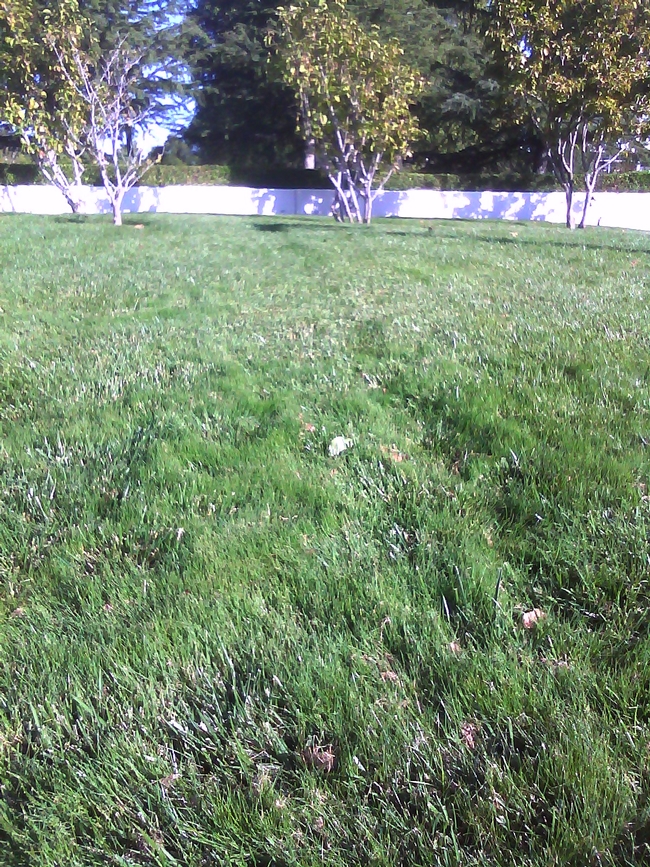- Author: Diana Bryggman
Finally, rain in November! Our last rainfall in Solano County was on September 21. Depending where you are in the county, your garden that late summer day received anywhere from one half to one inch of unusual September rain. You may have been delighted to water a bit less that week after the thorough drenching we received. But did it seem like your garden turned instantly green? Were you imagining how much better your plants looked? How does that happen? Is it a mirage?
No, it was the result of a good dosage of nitrogen deposited by the rain onto your garden. We know that nitrogen is one of the three primary elements necessary for plant growth, along with Potassium and Phosphorous. We also know that the earth’s atmosphere is made up of 78% nitrogen. This atmospheric nitrogen, deposited by a storm such as it was on September 21, can equate to a 10-pound per acre application of fertilizer. That would not be a significant amount for a farmer to apply to an acre under production, or to a homeowner for a (very unlikely) acre of lawn. But for our thirsty gardens in September, that rainstorm delivered a powerful boost towards green growth, followed as it was by the more typical warm sunny days of late September.
Today’s rainfall total will be much less that that of September 21, but be prepared for a noticeable green in your garden, thanks to a light sprinkling of free nitrogen fertilizer.

- Author: Kathy Thomas-Rico
It’s been both interesting and frightening watching the drought unfold across the country this spring and summer. It’s a very serious situation, and may be a harbinger and an affirmation of climate change. I believe it is.
Has it dawned on anyone else that the dry, hot summer the rest of the country has suffered through is exactly like what we Californians endure most years? Could it be the rest of the country will soon share our Mediterranean climate, of relatively wet, warm winters and summers of drought? Now THAT’s something to mull.
Of course, our West Coast climate is changing, too. Spring seems to arrive and leave sooner than in years past. The winter and spring rains seem to fall torrentially, rather than a few days here, followed by a few days to soak in, and on and on. And the often-sparse Sierra snowpack melts sooner in the year.
But because we in the West are adapted to our summer-drought cycle, we have built a good system of water storage to catch those spring rains and snowmelt. The Midwest, South and East Coast do not have this same system. No need when you usually have plenty of summer rain that soaks into the soil and keeps the rivers running high.
A recent family vacation to Seattle was an eye-opener for me. While there, I saw nightly news video of the drought-ravaged Midwest. Even the mighty Mississippi River was too low for some maritime traffic. Graphics were aired showing the extent of the drought. About the only place on the map of the continental U.S. that was not in drought was western Washington State (including Seattle), which has had an unusually wet and cool summer.
Maybe we should have looked at property while we were there. I could see a land rush happening in the region; it’s where most of the water is.

- Author: Edward Walbolt
This year as summer transitioned to fall, we were blessed with a few days of unusually early fall rain. In some areas of Solano County almost two inches of precipitation fell after only a few days in late September and early October. A benefit of the rain was that Solano’s turf and native grasses were transformed from being burned out, parched, and dangerously flammable to being lush, spring-like, and full of new light green growth hues and vigor. The areas in my turf garden that were worn down quickly filled in with new growth now covering the previously bare patches caused by the late summer’s heat. The timing on the rains could not have come at a better time for a lot of us, most specifically me. My office was recently moved 50 miles farther from home and with the long hours commuting between there and Fairfield I had been neglecting my turf garden. I intended to find some time to water and fertilize my Fescue/Bluegrass blend to prepare for the fall, but I had not gotten around to it before the rains came. Needless to say, I think I can put off my fertilizer regiment until the end of November without worry. Solano County doesn’t often get nature’s showers until November or December so it was a unique nitrogen-rich phenomenon this year that many of our gardens benefitted from.




